On March 28, 2019, the U.S. District Court for the District of Columbia found significant provisions of the Department of Labor’s (DOL’s) final rule expanding the availability of association health plans (AHPs) to be unlawful. In State of New York et. al. v. United States Department of Labor, the Court held that the rule’s interpretation of “employer” to include working owners and groups without a true commonality of interest was unreasonable and, “clearly an end-run around the [Affordable Care Act]” with the purpose of “avoid[ing] the most stringent requirements of the [Affordable Care Act].” The court set aside those parts of the regulation and remanded the rule to the DOL to determine how the rule’s severability provision affects the remaining part of the rule.
The DOL is reviewing the decision and could decide to revoke the rule, revise it in a way that complies with the court’s ruling, or appeal the decision to the Court of Appeals for the D.C. Circuit.
Background
Trade associations often offer health insurance to their members. Historically, these associations identified themselves as employers or employee organizations under the Employee Retirement Income Security Act of 1974 (ERISA) to claim ERISA preemption from state insurance regulation. Then, in 1983, Congress amended ERISA to give states regulatory authority over self-insured multiple employer welfare arrangements (MEWAs) and some regulatory authority over fully insured MEWAs. AHPs are one type of MEWA.
The Affordable Care Act (ACA) added reporting requirements for MEWAs, imposed criminal penalties on MEWA fraud, and authorized the DOL to take immediate action to address fraudulent MEWAs. It also dropped an exception from the “guaranteed availability” provision of the Public Health Service Act that had previously existed for bona fide association plans. As a result, an insurer that offers coverage through an association must offer the same plan to non-members who want it (and are aware of it). Associations themselves are not subject to guaranteed availability requirements.
The ACA also defined large group, small group, and individual plans, without reference to how they were offered (i.e. whether as an AHP or otherwise). Prior to the new rule, AHPs continued to exist, but largely subject to the ACA rules. This “look through” doctrine considers only whether the participating individual or employer is obtaining individual, small group, or large group coverage – it does not “look” at the AHP as a whole to determine whether the small group or large group rules apply. This means that small group coverage obtained through an AHP was regulated under the same standards that applied to the small group market. This includes many of the ACA’s most significant small group rules, such as coverage of preexisting conditions, rating rules, and the essential health benefits requirements.
However, if an association could be treated as an employer who is sponsoring a single health plan for its members, the AHP would be regulated as a group health plan under ERISA. Group health plans are subject to various reporting, disclosure, fiduciary and other requirements imposed by ERISA, the Health Insurance Portability and Accountability Act of 1996 (HIPAA), COBRA, and some, but not all, of the Affordable Care Act’s market reforms. Group health plans are also exempt from most state regulation. Although insurers that insure group health plans are subject to state laws and regulations with respect to the insurance policies, states cannot regulate the underlying employer-health plan. As a large group health plan, an AHP would not have to comply with many of the ACA’s most significant consumer protections (such as coverage of essential health benefits or rating rules) that apply in the individual and small group markets, or many state requirements.
Prior to the new rule, the DOL had interpreted this AHP exception narrowly to apply only when a “bona fide” group of employers is bound together by a commonality of interest (other than simply providing a health plan) with vested control of the association so that they effectively operate as a single employer. Thus, eligible association members had to share a common interest, join together for purposes other than providing health insurance, exercise control over the AHP, and have one or more employees in addition to the business owner and spouse. AHPs offered by general business groups or that include individual members do not qualify, a position the DOL reaffirmed as recently as 2017.
The Final Rule
This exception—where an AHP can be treated as a group health plan under ERISA—was the target of the DOL’s final rule on AHPs, which was issued in June 2018. The DOL’s final rule made it much easier for an association to be considered a single multi-employer plan under ERISA. The final rule relaxed a long-standing “commonality of interest” requirement that associations must exist for a reason other than offering health insurance and allowed self-employed “working owners” to enroll in AHP coverage. The rule also included nondiscrimination protections that prohibit associations from conditioning membership based on a health factor (although not other factors such as gender, age, geography, and industry). The rule did not disturb state regulatory authority over AHPs but left open the possibility that the DOL would grant exemptions for AHPs from state requirements in the future.
The final rule also included a severability provision, which provides that the rest of the rule would remain operative even if parts of the rule were found to be invalid or unenforceable. The preamble cited an example regarding working owners: if a federal court rules that the working owners provision is void, this provision should be severed from the rest of the regulation and thus would not impact, for example, the ability of an association to meet the final rule’s updated commonality of interest test.
In July 2018, 12 states— California, Delaware, the District of Columbia, Kentucky, Maryland, Massachusetts, New Jersey, New York, Oregon, Pennsylvania, Virginia, and Washington —filed a lawsuit challenging the final rule for violating the Administrative Procedure Act. The states argued that the DOL’s new interpretation of “employer” was inconsistent with the text and purpose of ERISA, that the goal of the final rule was to undermine the ACA, and that the DOL was changing long-standing interpretations of ERISA to do so. The states argued that by picking and choosing the circumstances under which an association meets the definition of an “employer” under ERISA, the rule disregards the intent of Congress when adopting the ACA to establish three distinct sets of rules for three distinct markets (the individual, small group, and large group markets). The states also alleged that the rule increased the risk of fraud and harm to consumers, required states to devote significant resources to preventing that risk, and jeopardized the ability of states to adopt stronger protections.
The lawsuit asked the court to hold the AHP rule invalid, to vacate and set it aside, and to enjoin the DOL from implementing or enforcing the rule.
The Decision
Judge Bates held that the DOL failed to reasonably interpret ERISA and that significant provisions of the final rule—on bona fide associations and working owners—must be set aside. The bona fide association standard failed to meaningfully limit the types of associations that qualify to sponsor an ERISA plan. This violates Congress’s intent that only an employer association acting “in the interest of” its members falls under ERISA. The working owner provision is inconsistent with the text and purpose of ERISA, which is to regulate benefit plans that arise from employment relationships. By extending the rule to include working owners, the DOL impermissibly extended ERISA to plans outside of an employment relationship.
Judge Bates held that the states were challenging only parts of the new rule—i.e., the new standards for bona fide associations, commonality of interest, and working owners under 29 C.F.R. 2510.3-5(b), (c), and (e). Because the states did not challenge the rule’s other changes related to nondiscrimination and organizational structure, the court did not address those requirements, holding that they are “collateral” to the rule’s three main requirements. Instead of invalidating the entire rule, Judge Bates therefore remanded the rule to DOL to consider how the rule’s severability provision affects the remaining portions.
The Decision Regarding “Bona Fide Association”
Historically, the DOL wanted to ensure that an association had a “sufficiently close economic or representational nexus to the employers and employees that participate in the plan.” This analysis centered on 1) whether the association is a bona fide organization that has purposes and functions unrelated to providing benefits; 2) whether the employers share some commonality and genuine organizational relationship unrelated to providing benefits; and 3) whether the employers that participate in a benefit program exercise control over the program.
In the final rule, the DOL maintained the same three criteria—primarily purpose, commonality of interest, and control—for determining whether an association acts in the interest of an employer and is thus a bona fide employer under ERISA. However, the final rule reinterprets these criteria in a way that the Court found too significantly departs from the DOL’s prior guidance and in a way that fails to limit ERISA’s exemptions to only associations that act “in the interest of” employers. This unlawfully expands ERISA’s scope and conflicts with the statutory text. Judge Bates discussed each of these three criteria individually and then considers them together.
First, the final rule relaxed the requirement that associations exist for a reason other than offering health insurance. Under the final rule, an association’s principal purpose could be to provide benefits so long as the group or association had at least one “substantial business purpose” unrelated to providing benefits. DOL’s examples of a “substantial business purpose” range from resource-intensive activities (e.g., setting business standards or practices) to de minimis activities (e.g., publishing a newsletter).
This new interpretation of the “primary purpose” test fails to set meaningful limits on the character and activities of an association that qualifies as an “employer” under ERISA. Under the final rule, sponsoring an AHP may be the association’s only purpose so long as the association does de minimis activities that qualify as a “substantial business purpose.” Judge Bates concludes that this is “such a low bar that virtually no association could fail to meet it.” As such, the standards are too broad fail to identify defining characteristics of a subset of organizations that would fall under ERISA’s scope.
Second, employers must show a “commonality of interest” to form an association sponsoring an AHP. Under the final rule, an association can show commonality of interest among its members if they are either 1) in the same trade, industry, profession, or line of business; or 2) in the same principal place of business within the same state or a common metropolitan area even if the metro area extends across state lines. This change significantly relaxed the prior “commonality of interest” standard, making it easier for employers—tied only by being in the same line of business or geographic area—to band together and form an association for the sole purpose of offering health coverage.
Judge Bates explained, “ERISA imposes a common interest requirement, not merely a something-in-common requirement.” The geography test “effectively eviscerates” the commonality of interest required under ERISA and impermissibly exceeds the scope of the statute.
Third, the final rule required a group or association to have an organizational structure and be functionally controlled by its members, in both form and substance, either directly or by electing a board or other representatives. The control test does limit the types of associations that qualify as employers by ensuring that employer members direct the actions and decisions of the association with respect to the AHP. However, this prong fails too because it cannot overcome concerns about the lack of common interest among employers. The control test is only meaningful if employers’ interests are already aligned. If employer members have opposed interests, the control test—through, say election of officers—would only further the interests of some, but not all, employers within the association.
Collectively, these three criteria fail to limit “bona fide associations” to those acting “in the interest of” their employer members under ERISA. Under the final rule, groups of employers with no common characteristic other than presence in the same state could qualify as a single employer under ERISA so long as that group had an election-based officer structure and some incidental business-related project. This, in Judge Bates’ view, is not enough to show that an association and its members are connected by a true employment nexus. In addition, the rule would impermissibly enable groups that resemble commercial insurance providers to qualify as an “employer” for purposes of offering an AHP under ERISA, which has long been forbidden.
The DOL argued that the final rule’s nondiscrimination requirements balance its less stringent standards for commonality of interest and purpose. Judge Bates disagrees. The nondiscrimination provision governs how qualifying associations can structure their AHP premiums but does nothing to limit which associations qualify under the final rule. Because of this, the nondiscrimination provision does not impact the court’s analysis.
The Decision Regarding “Working Owners”
Historically, AHP enrollment has been limited to the association members’ employees, former employees, and their families or beneficiaries. This has meant that individuals—including sole proprietors with no common law employees—generally have not been able to enroll in group health AHPs.
The final rule expanded the availability of AHP group coverage to self-employed individuals referred to as “working owners.” Under the rule, a working owner without common law employees can qualify as both an employer and an employee for purposes of enrollment in a group health AHP. This “dual treatment” would allow a self-employed individual to be an employer (to participate in the AHP and offer group coverage) and an employee (of their own business to qualify for the health coverage offered by the AHP). Because of this, two sole proprietors without employees could band together to form an association and then offer an ERISA plan to themselves.
Judge Bates found this to be absurd. Rather than “interpreting” ERISA, the DOL rewrote the statute, ignoring the law’s definitions and structure, caselaw, and ERISA’s 40-year history of excluding employers without employees. A working owner’s membership in an association does not bring him under ERISA: joining an association cannot transform a sole proprietor into an “employer” or “employee” under the statute. Further, Congress did not intend for working owners without employees to be included under ERISA because ERISA’s focus is on benefits arising from employment relationships. Working owners employ no one: one does not have an employment relationship with oneself.
Implications
The most immediate impact of the decision is that it prevents the formation of self-insured AHPs under the new rule. The rule would have gone into effect for new self-insured AHPs beginning on April 1.
Another question is what happens to the existing AHPs that have been formed under the rule already. For example, AHPs formed on the basis of the expanded commonality of interest under the final rule will need to consider whether they can comply with the historical bona fide association requirements. In addition, because the final rule has been vacated, those AHPs offering coverage to working owners and small employers no longer qualify as ERISA plans under the rule. Since they no longer qualify as ERISA plans, they are governed under the ACA’s rules in the individual and small group market and subject to state regulation. Given this, these AHPs may need to come into compliance with the ACA’s individual and small group market protections.
Finally, States, and the DOL, may want to take enforcement action against AHPs presumably could, relying on state law or the prior “look through” doctrine. It is not yet clear what (if any) guidance the DOL, or potentially the Department of Health and Human Services, might give or whether they will announce an enforcement stance for AHPs currently offering non-ACA-compliant coverage.
In the meantime, DOL is reviewing the decision and could decide to revoke the rule altogether, revise it in a way that complies with the decision, or appeal the decision to the Court of Appeals for the D.C. Circuit.
Prior Post regarding the Final Rule
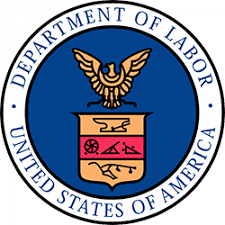

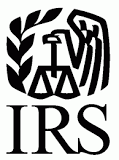
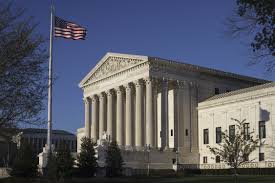
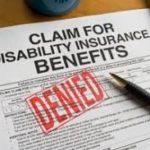
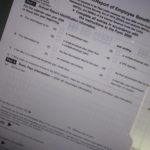 The U.S. Department of Labor’s Employee Benefits Security Administration, the IRS, and the Pension Benefit Guaranty Corporation (PBGC) have releasedadvance informational copies of the
The U.S. Department of Labor’s Employee Benefits Security Administration, the IRS, and the Pension Benefit Guaranty Corporation (PBGC) have releasedadvance informational copies of the